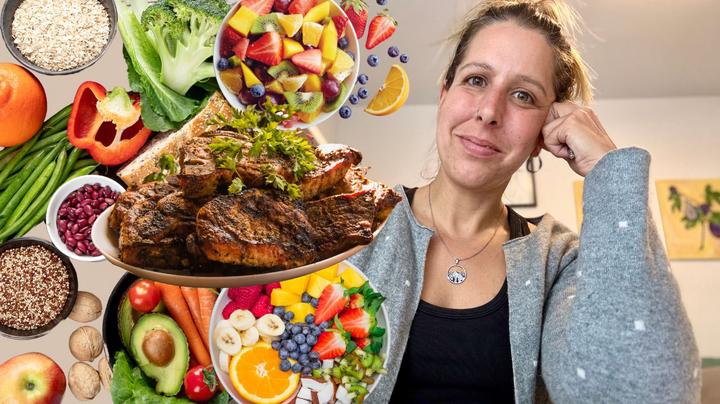The adage “You are what you eat” resonates deeply, especially when we consider its implications for our skin. Your diet significantly influences not just your waistline and overall health but also the appearance and ageing process of your skin. As the body’s largest organ, skin serves as a reflective surface, showcasing the health of your internal organs.
Poor dietary choices can lead to various skin issues, including inflammation, dullness, breakouts, and even premature ageing. Understanding the factors contributing to skin deterioration empowers you to make informed choices that can help you maintain your skin’s natural radiance.
Let’s delve into some of the most detrimental foods that might be affecting your skin and discuss how reducing or eliminating them can help restore your youthful glow.
Fried Foods: A Recipe for Breakouts
Fried foods might be tempting with their golden, crispy exterior, but they can wreak havoc on your skin. Beyond the well-documented risks associated with their high fat content and impact on heart health, fried foods can also exacerbate skin problems. The consumption of these foods often leads to an accumulation of excess oil in the body, which translates to skin that reflects this underlying imbalance.
Research indicates that the cooking process used for fried foods creates advanced glycation end products (AGEs), substances that contribute to oxidative stress and inflammation—two conditions that can hasten the breakdown of collagen and elastin. These proteins are essential for maintaining your skin’s firmness and youthfulness.
Fortunately, you can still enjoy similar flavours without the associated damage by opting for baked, air-fried, or steamed versions of your favourite dishes. Making these substitutions can significantly reduce the potential for breakouts and skin irritation while still satisfying your cravings.
High-Glycemic Carbohydrates: The Acne Catalyst
High-glycaemic foods—such as white bread, pasta, and sugary desserts—can have a detrimental effect on your skin, primarily due to their rapid conversion into sugar in your bloodstream. This swift transformation not only impacts your energy levels but also affects skin health.
When you consume high-glycaemic foods, your body’s insulin and glucose levels spike. This hormonal surge triggers an inflammatory response, stimulating the production of sebum, the oily substance that can clog pores and create an ideal environment for acne-causing bacteria to thrive.
Switching to low-glycaemic alternatives has shown remarkable results for skin health. Studies indicate that individuals who regularly consume low-glycaemic foods experience about 50% fewer acne occurrences compared to those who indulge in high-glycaemic options. Small changes can yield significant benefits—choose brown rice instead of white, snack on sweet potatoes rather than regular potatoes, and select whole-grain bread over its refined counterpart. These alternatives provide sustained energy without the sharp spikes in blood sugar that can lead to skin issues.
Sugar: Saboteur of Skin Health
While sugar may tantalise your taste buds, its long-term effects on your skin can be quite damaging. A high sugar intake is one of the leading dietary factors contributing to accelerated skin ageing. This is primarily due to glycation, a process where sugar binds to proteins in the bloodstream and forms harmful AGEs. The formation of these products compromises collagen and elastin, vital proteins that keep your skin plump and elastic. As these proteins break down, fine lines deepen, wrinkles appear, and skin loses its youthful firmness.
In addition to hastening visible signs of ageing, excessive sugar consumption can weaken your immune system, making it more challenging for your body to fend off harmful microorganisms. The resulting toxin accumulation can lead to irritation, acne, and a lacklustre complexion.
It’s crucial to clarify that you don’t need to eliminate sweetness from your life completely. Instead, consider opting for naturally sweet foods like fresh fruits, which offer antioxidants that support skin health and fibres that slow sugar absorption. For those with a sweet tooth, dark chocolate with a high cocoa content (70% or more) can satisfy cravings while providing skin-loving antioxidants.
Alcohol: The Skin’s Dehydrator
Though not a food, alcohol deserves special attention due to its significant impact on skin health. The effects of alcohol are both immediate and cumulative, and frequent consumption can have a lasting impact on your complexion.
As a potent diuretic, alcohol leads to dehydration throughout the body. When your body is dehydrated, it prioritises the hydration of vital organs—this means your skin may be left lacking the moisture it needs to maintain its vitality. The result is often dry, lifeless skin that becomes increasingly susceptible to wrinkles and fine lines.
Additionally, alcohol causes vasodilation, the expansion of blood vessels, which can exacerbate conditions such as rosacea. This chronic skin disorder manifests as redness, swelling, and acne-like bumps. Even moderate consumption can trigger flare-ups for individuals with sensitive skin or pre-existing rosacea.
Conclusion
To protect your skin, consider moderating alcohol intake and complementing your hydration with water-rich foods and beverages. By making conscious dietary choices, you can support the health of your skin from the inside out and preserve its youthful glow for years to come.
